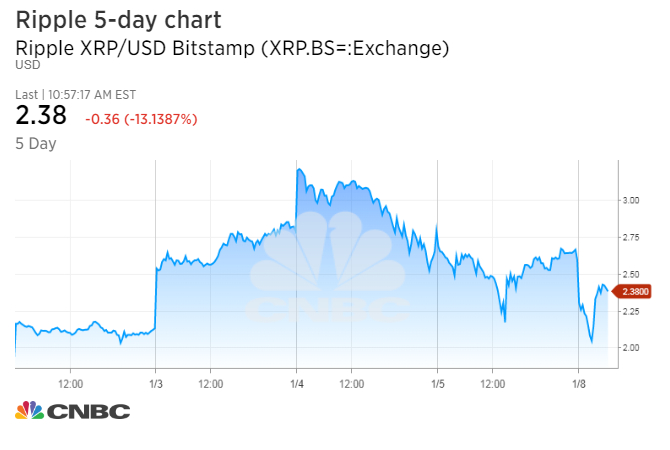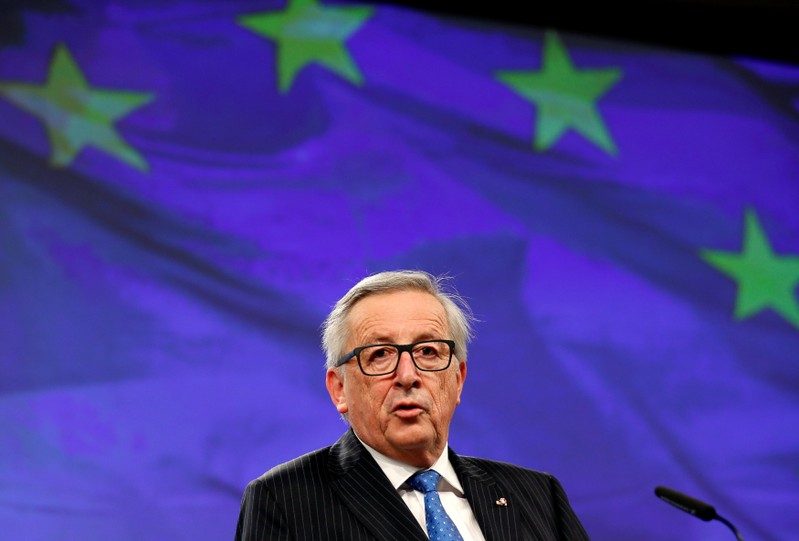Digital currencies fell broadly on Monday, with ripple and bitcoin leading the charge lower.
Ripple traded 12.6 percent lower on the Bitstamp exchange. Coinmarketcap.com showed its price down nearly 30 percent, but it appeared that may be due to the site excluding certain prices from Korean exchanges.

Bitcoin was off by 10.6 percent, while litecoin fell 8 percent according to Coinbase. Bitcoin futures also fell 11.7 percent at the Cboe, trading at $14,810 as of 10:47 a.m. New York time.
Ethereum prices, however, climbed 2.4 percent to $1,100.50.
Ripple left counterparts like bitcoin, the largest digital currency by market cap, in the dust last year. In 2017, ripple soared 35,000 percent, while bitcoin rose 1,500 percent.
Contrary to many digital currencies, ripple has been working with large institutions, giving it an aura of legitimacy and practicality. However, cryptocurrency enthusiasts say centralization is the exact opposite of what the technology of the digital currencies should be about.
“The reason ripple is surging so much is it’s a bubble,” said Erik Voorhees, CEO of digital asset exchange ShapeShift and a vocal advocate for bitcoin as a way to separate money and the state. “Testing crypto with banks doesn’t make sense. The whole idea of crypto is you don’t need banks.”
Ripple is officially the name of a 5-year-old start-up based in San Francisco that is developing a payments network for financial institutions. XRP is the name of the coin participants can use for transactions.
—CNBC’s Evelyn Cheng contributed to this report.

